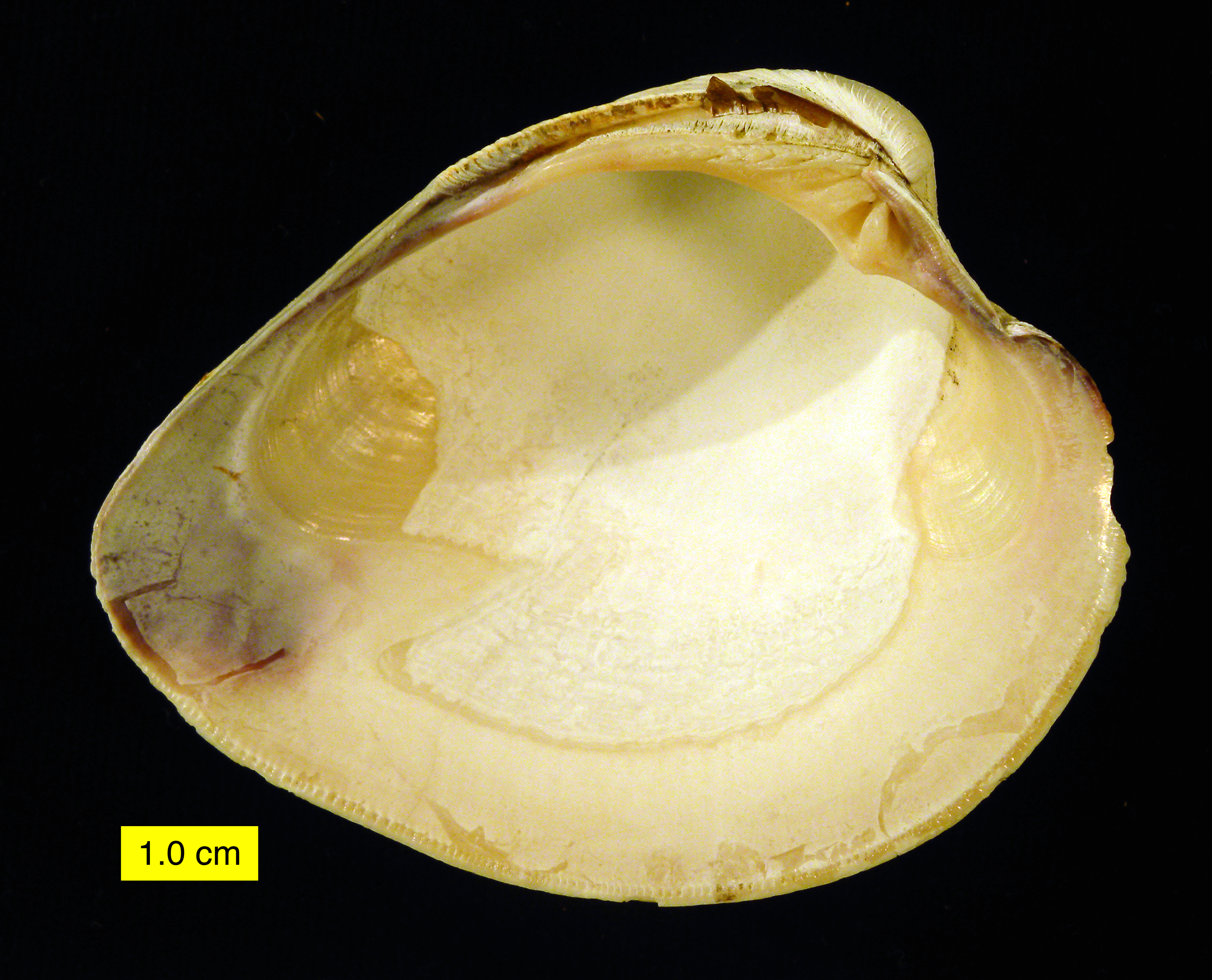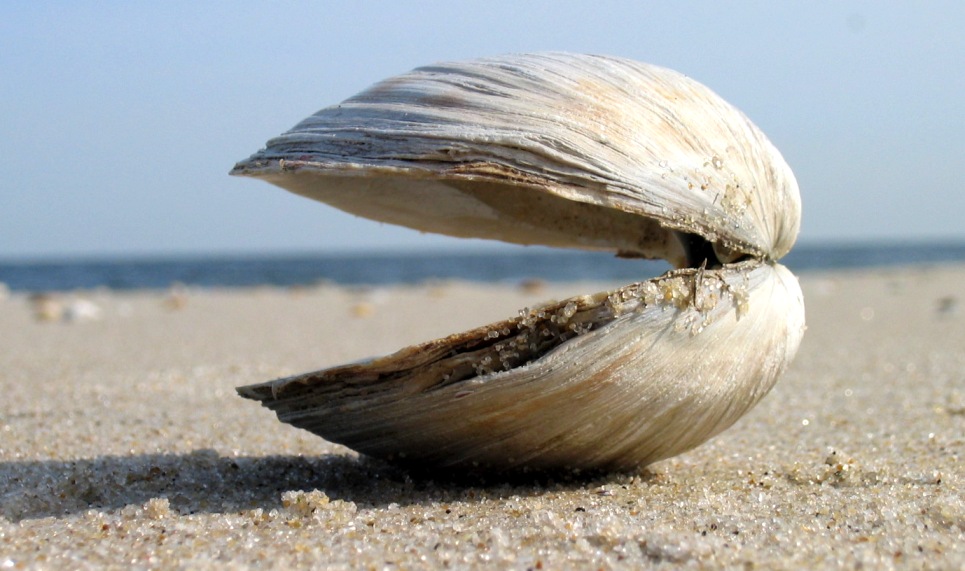|
Veneridae
The Veneridae or venerids, common name: Venus (mythology), Venus clams, are a very large family of minute to large, saltwater clams, marine bivalve molluscs. Over 500 living species of venerid bivalves are known, most of which are edible, and many of which are exploited as food sources. Many of the most important edible species are commonly known (in the USA) simply as "clams". Venerids make up a significant proportion of the world fishery of edible bivalves. The family includes some species that are important commercially, such as (in the USA) the hard clam or quahog, ''Mercenaria mercenaria''. Taxonomy The classification within the family Veneridae has been controversial at least since the 1930s. Molecular approaches show that much of this traditional classification is unnatural. Some common species have been moved between genera (including genera in different subfamilies) because of repeated attempts to bring a more valid organization to the classification or Taxonomy (biol ... [...More Info...] [...Related Items...] OR: [Wikipedia] [Google] [Baidu] |
Lioconcha
''Lioconcha'' is a genus of molluscs in the family Veneridae.Van der Meij, S.E.T., Moolenbeek, R.G., & Dekker, H. (2010). "The ''Lioconcha castrensis'' species group (Bivalvia: Veneridae) with the description of two new species." ''Molluscan Research'' 30(3): 117-124.MolluscaBase eds. (2021). MolluscaBase. Lioconcha Mörch, 1853. Accessed through: World Register of Marine Species at: http://www.marinespecies.org/aphia.php?p=taxdetails&id=204225 on 2021-05-09 Species * ''Lioconcha annettae'' Lamprell & Whitehead, 1990 * ''Lioconcha arabaya'' Van der Meij, Moolenbeek & Dekker, 2010 * ''Lioconcha berthaulti'' Lamprell & Healy, 2002 * ''Lioconcha caledonensis'' Harte & Lamprell, 1999 * ''Lioconcha castrensis'' (Linnaeus, 1758) * ''Lioconcha fastigiata'' (Sowerby, 1851) * ''Lioconcha gordoni'' (E. A. Smith, 1885) * ''Lioconcha harteae'' M. Huber, 2010 * ''Lioconcha hieroglyphica'' (Conrad, 1837) * ''Lioconcha kovalisi'' De Prins, 2013 * ''Lioconcha lamprelli'' Moolenbeek, Dekker & van ... [...More Info...] [...Related Items...] OR: [Wikipedia] [Google] [Baidu] |
Agriopoma
''Agriopoma'' is a genus of saltwater clams, marine bivalve molluscs in the family Veneridae, the venus clams.Abbott, R.T. & Morris, P.A. ''A Field Guide to Shells: Atlantic and Gulf Coasts and the West Indies.'' New York: Houghton Mifflin, 1995. 69. MolluscaBase eds. (2022). MolluscaBase. Agriopoma Dall, 1902. Accessed through: World Register of Marine Species at: https://www.marinespecies.org/aphia.php?p=taxdetails&id=415019 on 2022-01-20 Species * '' Agriopoma arestum'' (Dall & C. T. Simpson, 1901) * '' Agriopoma catharium'' (Dall, 1902) * † '' Agriopoma gatunensis'' (Dall, 1903) * '' Agriopoma morrhuanum'' (Dall, 1902) * '' Agriopoma texasianum'' (Dall, 1892) – Texas venus * '' Agriopoma tomeanum'' (Dall, 1902) ;Synonyms: * ''Agriopoma aequinoctiale'' Fischer-Piette, 1969: synonym of ''Pitar consanguineus ''Pitar'' is a genus of saltwater clams, marine bivalve molluscs in the subfamily Callocardiinae of the family Veneridae, the Venus clams. The genus contains ove ... [...More Info...] [...Related Items...] OR: [Wikipedia] [Google] [Baidu] |
Callista (bivalve)
''Callista'' is a genus of saltwater clams, marine, bivalve molluscs in the family Veneridae The Veneridae or venerids, common name: Venus (mythology), Venus clams, are a very large family of minute to large, saltwater clams, marine bivalve molluscs. Over 500 living species of venerid bivalves are known, most of which are edible, and m ..., the venus clams. Species Species within the genus ''Callista'' include: * '' Callista bardwelli ''Clench & Mclean, 1936 * '' Callista brevisiphonata'' Carpenter, 1865 * '' Callista chinensis'' Holten, 1802 * '' Callista chione'' (Linnaeus, 1758) * '' Callista costata'' Dillwyn, 1817 * '' Callista erycina'' Linnaeus, 1758 * '' Callista eucymata'' Dall, 1890 * '' Callista florida'' Lamarck, 1818 * '' Callista grata'' Deshayes, 1853 * '' Callista impar'' Lamarck, 1818 * '' Callista maculata'' (Linnaeus, 1758) * '' Callista multiradiata'' Sowerby, 1851 * '' Callista phasianella'' Deshayes, 1854 * '' Callista pilsbryi'' Habe, 1960 ... [...More Info...] [...Related Items...] OR: [Wikipedia] [Google] [Baidu] |
Sunetta Meroe 002
''Sunetta'' is a genus of bivalves belonging to the family Veneridae. The species of this genus are found in Old World The "Old World" () is a term for Afro-Eurasia coined by Europeans after 1493, when they became aware of the existence of the Americas. It is used to contrast the continents of Africa, Europe, and Asia in the Eastern Hemisphere, previously ... and Australia. Species Species: *'' Sunetta adelinae'' *'' Sunetta beni'' *'' Sunetta bruggeni'' *'' Sunetta concinna'' *'' Sunetta crassatelliformis'' *'' Sunetta cumingii'' *'' Sunetta donacina'' *'' Sunetta effossa'' *'' Sunetta kirai'' *'' Sunetta langfordi'' *'' Sunetta menstrualis'' *'' Sunetta meroe'' *'' Sunetta nomurai'' *'' Sunetta ovalis'' *'' Sunetta scripta'' *'' Sunetta solanderii'' *'' Sunetta subquadrata'' *'' Sunetta sunettina'' *'' Sunetta vaginalis'' References Veneridae Bivalve genera {{Veneridae-stub ... [...More Info...] [...Related Items...] OR: [Wikipedia] [Google] [Baidu] |
Lamelliconcha
''Lamelliconcha'' is a genus of molluscs in the subfamily Callocardiinae of the family Veneridae The Veneridae or venerids, common name: Venus (mythology), Venus clams, are a very large family of minute to large, saltwater clams, marine bivalve molluscs. Over 500 living species of venerid bivalves are known, most of which are edible, and m ....MolluscaBase eds. (2022). MolluscaBase. Lamelliconcha Dall, 1902. Accessed through: World Register of Marine Species at: https://www.marinespecies.org/aphia.php?p=taxdetails&id=511122 on 2022-01-20 Species * '' Lamelliconcha alternata'' (Broderip, 1835) * '' Lamelliconcha callicomata'' (Dall, 1902) * '' Lamelliconcha circinata'' (Born, 1778) * '' Lamelliconcha concinna'' (G. B. Sowerby I, 1835) * '' Lamelliconcha paytensis'' (d'Orbigny, 1845) * '' Lamelliconcha tortuosa'' (Broderip, 1835) * '' Lamelliconcha unicolor'' (G. B. Sowerby I, 1835) * '' Lamelliconcha vinacea'' Olsson, 1961 ;Synonyms: * ''Lamelliconcha concinnus'' (G. B. Sowe ... [...More Info...] [...Related Items...] OR: [Wikipedia] [Google] [Baidu] |
Hysteroconcha
''Hysteroconcha'' is a genus of saltwater clams, marine bivalve molluscs in the subfamily Callocardiinae of the family Veneridae, the Venus clams.MolluscaBase eds. (2022). MolluscaBase. Hysteroconcha Dall, 1902. Accessed through: World Register of Marine Species at: https://www.marinespecies.org/aphia.php?p=taxdetails&id=492495 on 2022-01-20 Species * '' Hysteroconcha brevispinosa'' (G. B. Sowerby II, 1851) * '' Hysteroconcha dione'' (Linnaeus, 1758) * ''Hysteroconcha lupanaria'' (Lesson, 1831) * '' Hysteroconcha multispinosa'' (G. B. Sowerby II, 1851) * '' Hysteroconcha rosea'' (Broderip & G. B. Sowerby I, 1829) ;Synonyms: * ''Hysteroconcha alternata'' (Broderip, 1835): synonym of ''Lamelliconcha alternata'' (Broderip, 1835) * ''Hysteroconcha callicomata'' (Dall, 1902): synonym of ''Lamelliconcha callicomata'' (Dall, 1902) * ''Hysteroconcha circinata'' (Born, 1778): synonym of ''Lamelliconcha circinata'' (Born, 1778) * ''Hysteroconcha concinna'' (G. B. Sowerby I, 1835): synonym ... [...More Info...] [...Related Items...] OR: [Wikipedia] [Google] [Baidu] |
Bivalve
Bivalvia () or bivalves, in previous centuries referred to as the Lamellibranchiata and Pelecypoda, is a class (biology), class of aquatic animal, aquatic molluscs (marine and freshwater) that have laterally compressed soft bodies enclosed by a calcified exoskeleton consisting of a hinged pair of half-bivalve shell, shells known as valve (mollusc), valves. As a group, bivalves have no head and lack some typical molluscan organs such as the radula and the odontophore. Their gills have evolved into ctenidium (mollusc), ctenidia, specialised organs for feeding and breathing. Common bivalves include clams, oysters, Cockle (bivalve), cockles, mussels, scallops, and numerous other family (biology), families that live in saltwater, as well as a number of families that live in freshwater. Majority of the class are benthic filter feeders that bury themselves in sediment, where they are relatively safe from predation. Others lie on the sea floor or attach themselves to rocks or other h ... [...More Info...] [...Related Items...] OR: [Wikipedia] [Google] [Baidu] |
Hard Clam
The hard clam (''Mercenaria mercenaria''), also known as the round clam, hard-shell (or hard-shelled) clam, or the quahog, is an edible marine bivalve mollusk that is native to the eastern shores of North America and Central America from Prince Edward Island to the Yucatán Peninsula. It is one of many unrelated edible bivalves that in the United States are frequently referred to simply as clams. Older literature sources may use the systematic name ''Venus mercenaria''; this species is in the family Veneridae, the venus clams. Confusingly, the "ocean quahog" is a different species, ''Arctica islandica'', which, although superficially similar in shape, is in a different family of bivalves: it is rounder than the hard clam, usually has a black periostracum, and there is no pallial sinus in the interior of the shell. Alternative names The hard clam has many alternative common names. It is also known as the Northern quahog, round clam, or chowder clam. In fish markets, there ar ... [...More Info...] [...Related Items...] OR: [Wikipedia] [Google] [Baidu] |
Clams
Clam is a common name for several kinds of bivalve mollusc. The word is often applied only to those that are deemed edible and live as infauna, spending most of their lives halfway buried in the sand of the sea floor or riverbeds. Clams have two shells of equal size connected by two adductor muscles and have a powerful burrowing foot. They live in both freshwater and marine environments; in salt water they prefer to burrow down into the mud and the turbidity of the water required varies with species and location; the greatest diversity of these is in North America. Clams in the culinary sense do not live attached to a substrate (whereas oysters and mussels do) and do not live near the bottom (whereas scallops do). In culinary usage, clams are commonly eaten marine bivalves, as in clam digging and the resulting soup, clam chowder. Many edible clams such as palourde clams are ovoid or triangular; however, razor clams have an elongated parallel-sided shell, suggesting ... [...More Info...] [...Related Items...] OR: [Wikipedia] [Google] [Baidu] |
Lunule (bivalve)
A lunule (from the Latin meaning small moon or crescent moon) is an anatomical feature which is found in the exterior surface of the shells of some species of clams, bivalve mollusks, as for example in the family Veneridae and in the genus ''Ascetoaxinus ''Ascetoaxinus'' is a genus of saltwater clams, marine bivalve molluscs in the family (biology), family Thyasiridae. The shells of species in this genus have a Lunule (bivalve), lunule with a scalloped margin. The genus was first described in 20 ...''. The lunule is a well-defined area near the hinge line of the shell, anterior to the beaks. Website conchs.org, The Conchological Society of Great Britain and Ireland, Molluscs, Glossary, Advanced glossary of molluscan terminology, Lunule, by Steve Wilkinson, 5 November 201Accessed 2014.12.9 Despite the name, a lunule is not always in the shape of a crescent moon. Details of the lunule are sometimes an important diagnostic feature in identifying a bivalve shell. References ... [...More Info...] [...Related Items...] OR: [Wikipedia] [Google] [Baidu] |
Marcia Marmorata 001
{{disa ...
Marcia may refer to: People * Marcia (given name) *James Marcia, Canadian psychologist *Stefano Marcia (born 1993), South African Olympic sailor *Marcia (wife of Cato), wife of Cato the Younger Other uses * ''Marcia'' (Beccafumi), a c. 1519 painting by Domenico Beccafumi * ''Marcia'' (bivalve), a genus of Venus clams in the family Veneridae * Marcia (gens), a Roman gens * '' Marcia: Greatest Hits 1975–1983'', a 2004 album by Marcia Hines * ''Marcia'', the Italian musical designation for a march or march tempo * Hyundai Marcia, a sedan produced by Hyundai for the South Korean market See also *Martia (other) *Martian (other) * Mars (other) * Marzia (other) *Mercia (other) Mercia was an Anglo-Saxon kingdom covering the region now known as the English Midlands. It is sometimes used as a poetic name for the Midlands. Mercia or Mercian may also refer to: * Mercia Inshore Search and Rescue, an volunteer water-rescue or ... [...More Info...] [...Related Items...] OR: [Wikipedia] [Google] [Baidu] |


